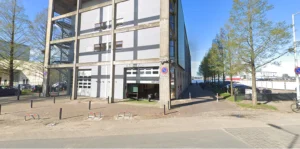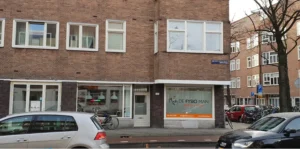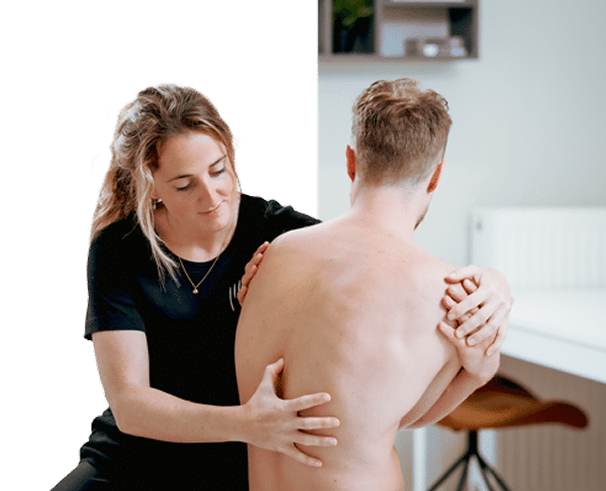A misstep, a wrong move, and suddenly you feel it: a sharp pain in your ankle. Whether you’re exercising, running down the stairs, or just taking a walk, a torn ankle ligament can happen to anyone. Now what? How can you test if the ankle ligaments are torn, or just the ankle is sprained? In this article, you’ll read all about the symptoms, tests, and how to recover step by step. With the right guidance, you’ll be stronger than ever on your feet!
In brief
- Torn ankle ligaments often result from an unexpected twisting or spraining of the ankle.
- Symptoms include swelling, pain, bruising, and instability of the ankle.
- There are three degrees of injury: mild strain, partial tear, and complete tear.
- Testing with a specialist helps determine the severity of the injury and rule out fractures.
- The recovery process varies by grade, with an emphasis on rest, cooling, and incremental exercises.
- Physical therapy plays an important role in restoring strength, stability and mobility.
- Severe instability or persistent symptoms may require further medical attention.

What are torn ankle ligaments?
Ankle ligaments are the strong structures that support your ankle joint and provide stability. With extreme tilt of the ankle, these ligaments can stretch or even tear. The most common injury occurs on the outside of the ankle due to a movement where the foot flips inward. This is also known as inversion trauma.
Symptoms of torn ankle ligaments
Torn ankle ligaments are often accompanied by the following symptoms:
- Sudden, sharp pain, usually on the outside of the ankle.
- Swelling that occurs within hours of the injury.
- Bruising from internal bleeding.
- Difficulty or inability to stand on the ankle.
- An unstable feeling in the ankle.
- Pain when the foot is touched or moved.
Gradations of injury
Torn ankle ligaments are often classified into three degrees:
- Grade 1: Slight sprain with minimal damage to the fibers. You can still stand on the ankle, but it feels painful and stiff.
- Grade 2: A partial tear in which significant swelling, bruising and pain are present. Walking may be difficult.
- Grade 3: A complete tear of the ankle ligaments. There is severe pain, lots of swelling and bruising, and it is impossible to stand on the ankle.
Testing – How can you be sure your ankle ligaments are torn?
Determining the severity of torn ankle ligaments requires a combination of physical examination and imaging. Here are the most common methods:
- Physical examination:
- The doctor or physical therapist assesses swelling, tenderness and restriction of movement.
- A stability test can help determine if the ankle ligaments are damaged.
- X-ray:
- If there is doubt about a possible bone fracture, an X-ray may be taken.
- MRI or ultrasound:
- For more detailed information about the extent of damage, an MRI scan or ultrasound may be performed.
Torn ankle ligaments recovery
The recovery process of torn ankle ligaments can vary depending on the severity of the injury:
- Acute phase (first 48 hours):
- Follow the R.I.C.E. principle:
- Rest: Avoid straining the ankle.
- Ice: Cool the ankle regularly for 15-20 minutes to reduce swelling.
- Compression: Use a compression bandage for extra support.
- Elevation: Keep the ankle elevated to reduce swelling.
- Follow the R.I.C.E. principle:
- Rehabilitation:
- Stage 1: Limited range of motion exercises to promote blood flow.
- Phase 2: Gradually increasing load and strengthening the surrounding muscles.
- Stage 3: Functional training to restore balance and stability. This may include exercises such as standing on one leg and controlled twisting movements.
- Alternative treatments:
- Dry needling: Can help reduce muscle tension around the joint and speed recovery.
- Taping or bracing: Provides additional support during the recovery phase and prevents further instability.
- Shockwave therapy: Used in some cases to stimulate tissue regeneration.
- Long-term recovery:
- Wearing a brace during athletic activities is recommended to prevent recurrence.
- Regular physical therapy to further improve strength and mobility.
Recovery time by grade
- Grade 1: Recovery within 2 to 3 weeks.
- Grade 2: Recovery within 6 to 8 weeks.
- Grade 3: Recovery within 3 to 6 months.
Role of physical therapy in recovery
A physical therapist plays a crucial role in repairing torn ankle ligaments. Treatment includes:
- Guidance on exercises for strength, mobility and stability.
- Establishing a personalized rehabilitation program.
- Advice on the use of braces and other devices.
- Preventive tips to avoid future injuries.
When to seek medical help?
Contact a physician if:
- You still have severe pain or swelling after 48 hours.
- You cannot walk more than four steps without support.
- The ankle continues to feel unstable after the acute phase.
Torn ankle ligaments can have a major impact on your daily life, but with proper care and guidance, full recovery is possible. Contact your doctor or physical therapist for advice and support in your recovery process.

Physical therapy for torn ankle ligaments at The Physio Man
At The Physio Man, we understand that torn ankle ligaments not only cause physical discomfort, but can also be a mental strain for athletes and active people. Our therapists are ready to guide you with a treatment plan that matches your recovery goals and sports level. With personalized attention and customized therapies, we will support you in your recovery and help you return to your sports or daily activities stronger and injury-free.
Make an appointment at The Physio Man today and experience how our experienced physical therapists can help you effectively repair your ankle ligaments and improve your physical well-being.
Why choose The Physio Man?
- Latest treatment techniques
- We look at the body as a whole
- 80% of our patients are complaint-free within a few treatments
- No long waiting lists
- Also open in the evening
At The Physio Man, we offer a wide range of treatment options aimed at reducing symptoms and improving quality of life. For questions or an intake consultation, contact us. Email info@defysioman.nl or call 020-3542926. Prefer to come by? Visit us at Jan van Galenstraat 301 in Amsterdam.
For more information also watch the following video:


